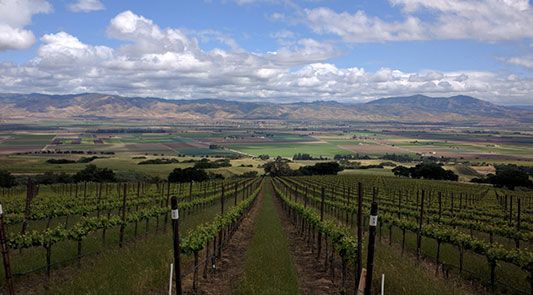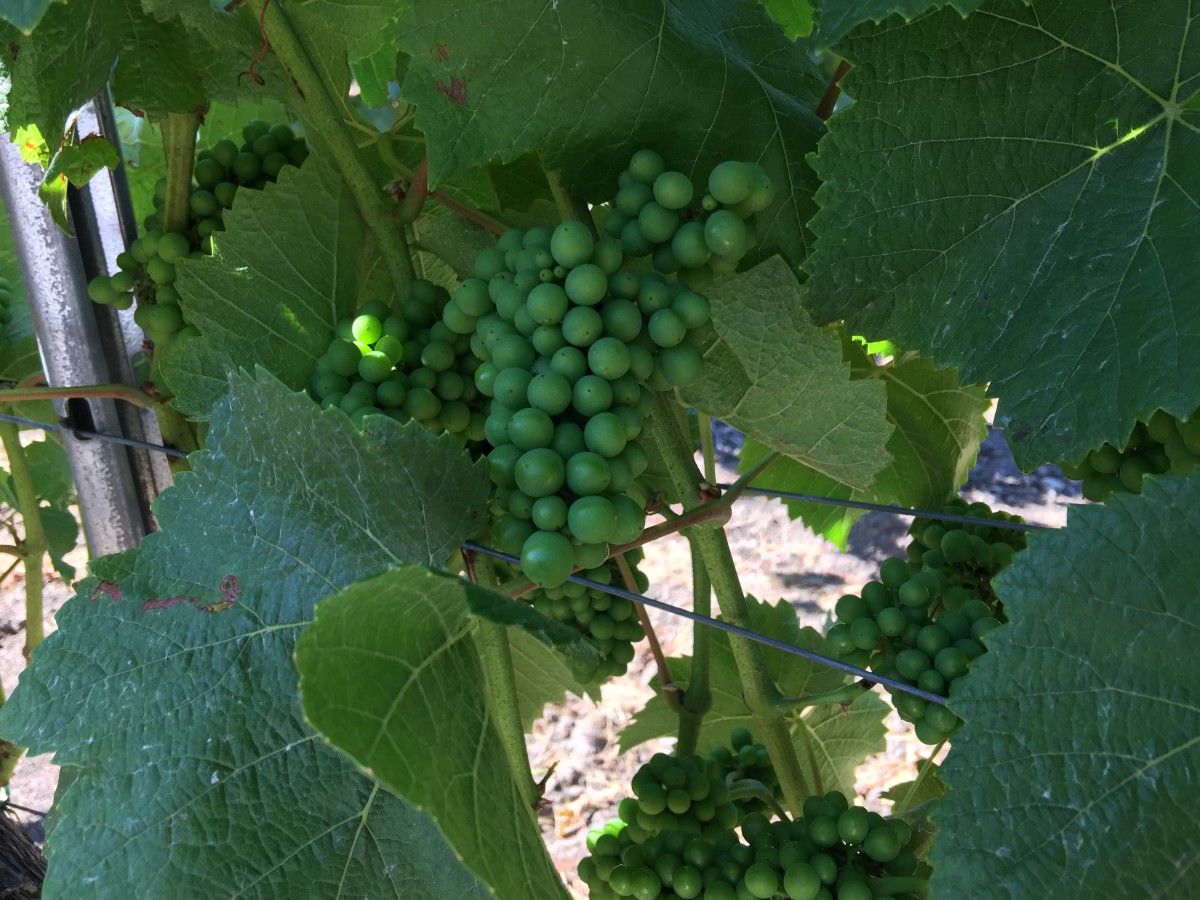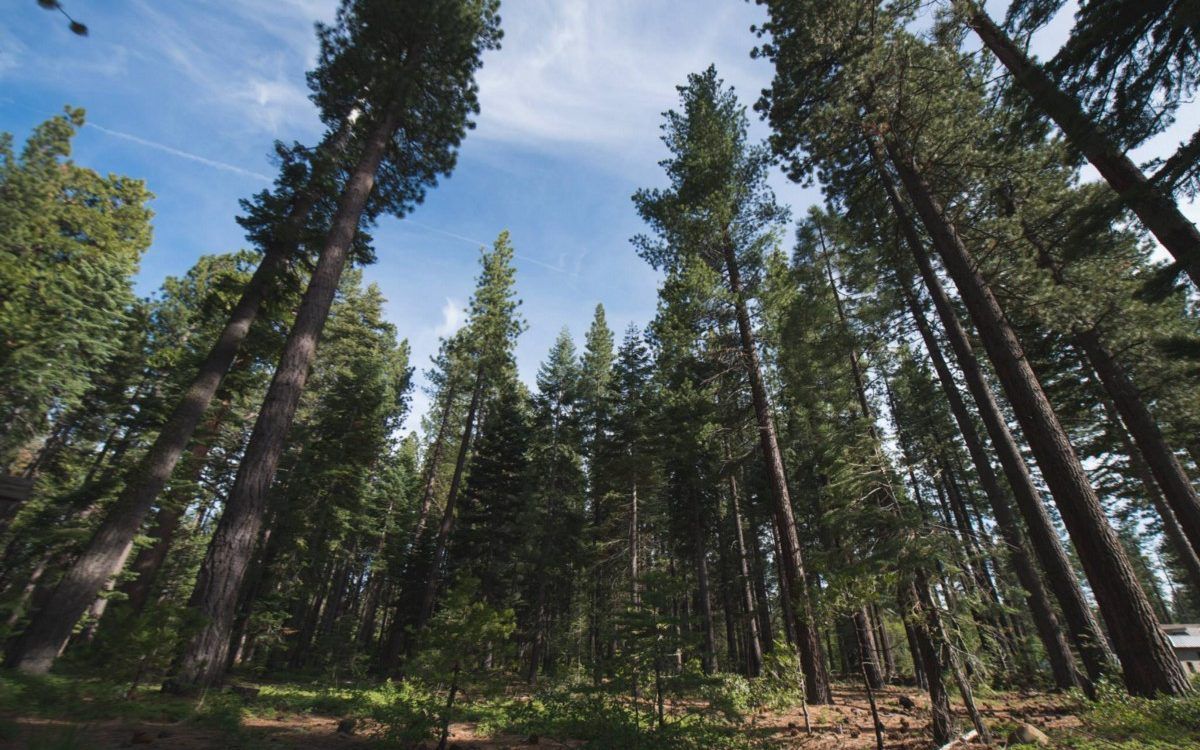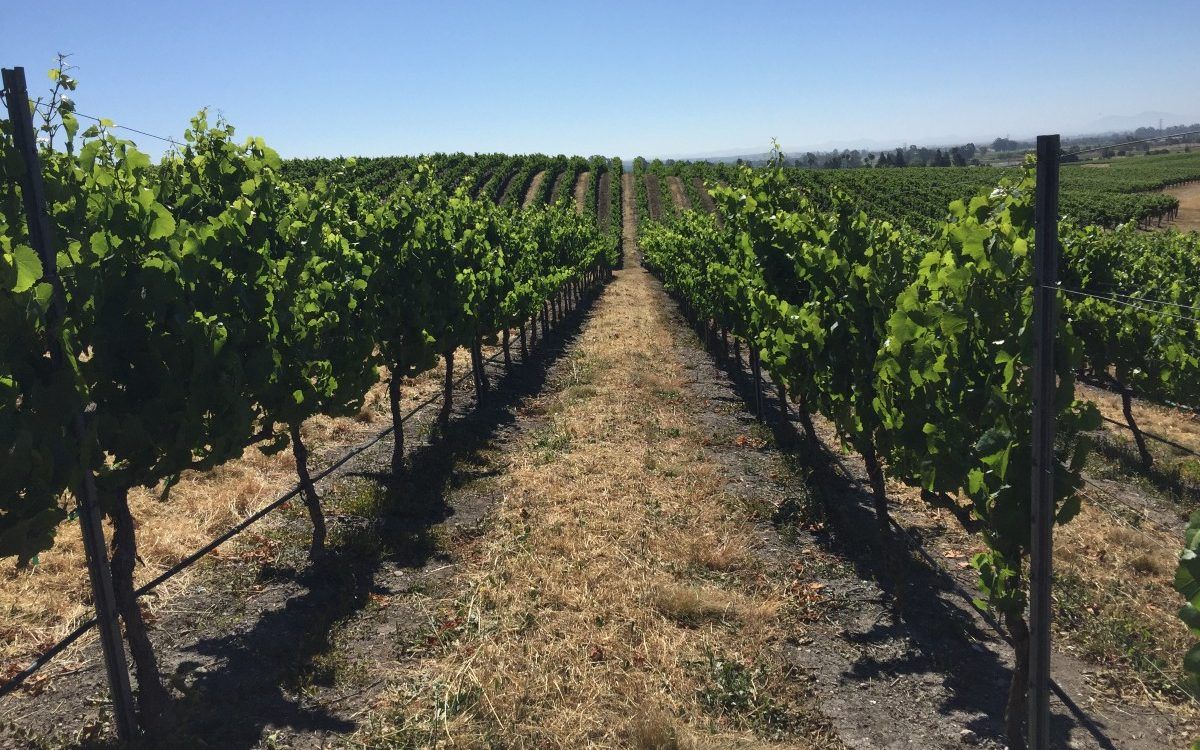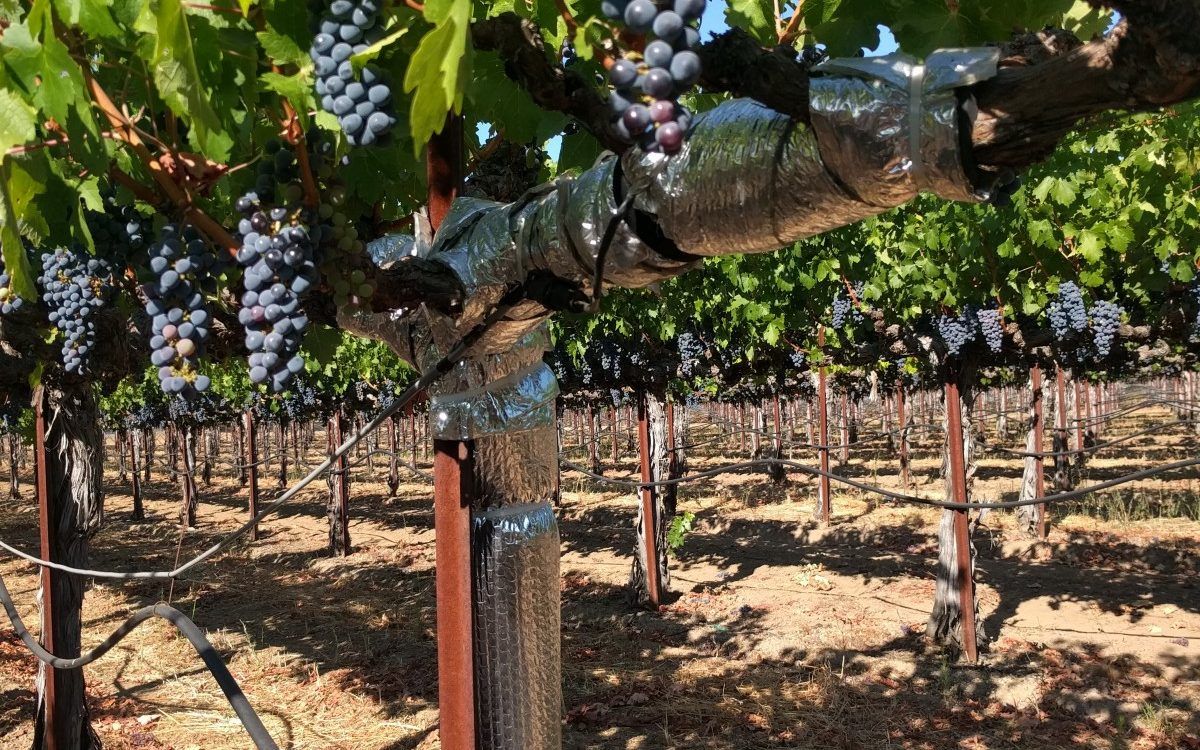Follow the Microbes: Measuring the Makers of Very Happy Grapes
At Smith & Hook Winery.
Of all the factors that people declare contribute to the flavor found in a bottle of wine, it’s hard to think of one that isn’t grounded in place. Soil type, geology, climate, microclimate, average rainfall, length of day, intensity of sun, wildfires, landscape contours, high and low temperatures, companion plants and animals, even grape varietal, ripeness and sugar content — in that they are informed by these same geographic and climatic conditions — are all rooted in the same place as the grapevine itself. Even more esoteric aspects, like rhizosphere and phyllosphere microbiota, have emerged as agents of influence over detectable differences in flavor profile. These, too, exist in a certain place, as a result of a complexity of elusive overlapping conditions in time and space. Scientists are just now learning how to quantify the way these microbes, on their infinitesimal scale, impact not only what we define as the quality of a wine, but the health of a vineyard’s ecosystem, and thus the livelihood of the growers and vintners themselves. The question on every grower’s mind these days seems to be: How do these invisible creatures affect the quality of my wine, and what can I do to make them happy?
In our last post, we explored how scientific research and technology has until recently focused largely on measuring climate and plants, due to the facts that aboveground metrics are more tangible, exist on a recognizable scale, and are plainly easier to see, therefore analyze. Established soil science stood relatively unchallenged for several centuries, folding seamlessly into the postindustrial processes that allowed farmers to grow their enterprises to achieve unprecedented yields. This worked by dissecting dirt into a simple amalgamation of chemical components that could be managed by isolated fertilizer inputs, and from a growth mindset, worked very well.
Young grapes on the vine at Treasury Wine Estates.
Current research is beginning to understand whole soil health as more complicated than the sum of its parts, and we are rethinking approaches to studying and stewarding our land in ways that maintain production value without depleting resources. Following the microbes may just be the path forward, allowing science and technology to help us see, understand, and act within a regenerative framework. On a daily basis, we hear from growers interested in shifting away from seeking simply higher yields, instead favoring quality over quantity. Vineyard managers and winemakers have long understood the importance of balancing canopy, sunlight, soil quality, water and nutrient applications to cultivate premium winegrapes. What does understanding microbial activity and its relationship with harvest outcomes mean for the future of the winegrape industry?
Single-celled microorganisms found in and around soil include bacteria, fungi, yeast, and protozoa; their job is to synthesize minerals and organic matter (essentially dead plants, animals, and other microbes, as well as all of their effluvia), which turns fallow dirt into productive soil by increasing water retention and producing plant-available nutrients that might otherwise be locked into the earth — though it’s just a bacchanal of eating and excreting to them. Microbes spent their first few billion years as the only living things on the planet, and all other life evolved into the world they shaped — so it would make sense to involve them in any decisions we make that tinker with the biosphere.
From forests to grasslands to vineyards, perennial ecosystems rely on below-ground fungi for their longevity.
We spoke with biologist Dr. Liz Koziol, who works at the Land Institute to jumpstart grassland restorations using microbe-rich soil transplants from old-growth prairie sites. She specializes in arbuscular mycorrhizal fungi (AMF), which are beneficial organisms that colonize plant roots and send out their own filaments into the soil, essentially extending the reach of the plant’s ability to imbibe nutrients. These filaments can commingle with filaments shot out from other roots, such as a nearby understory crop chosen by a grower for its characteristics complementary to grapevines, expanding exponentially the network of nutrient transfer back to the grapevine itself.
“My research has shown that specific old-growth native prairie mycorrhizae species are extremely beneficial to many grassland species. I could imagine similar processes applying to grapes,” Dr. Koziol explains. “There are likely certain mycorrhizal fungi species that are very happy growing in a symbiotic relationship with old-growth grapes. If those species were to be isolated and cultivated for inoculations of new transplants, you could have some very happy grapes on hand quickly”.
We like very happy grapes! As one can imagine, the mycorrhizae networks are delicate, with their fragility calling for a careful balance of cultivation practices and a nuanced approach to any additive-input regimen. This is why vineyards, especially as they are allowed to age in place and build their mysterious terroir, are ideal landscapes for microbial farming. Understanding the microbial balance (such as AMF), along with measuring canopy chlorophyll content and crop water stress, can help vineyard managers optimize— and effectively reduce — inputs relative to absorption patterns. It’s a way to work within nature’s existing paradigm to build up a dense nutrient network while decreasing chemical dependence.
“Plants and soil organisms have everything they need in the soils we have, just give them a little time to find it and perhaps, if needed, replace or reinvigorate living soil biota in soils that are unbalanced,” concludes Dr. Koziol.
There are several ways to inoculate soil, which exist on a spectrum from primal to commercial. The only way to be positive you are using local microbiota that has already adapted to the existing conditions in one’s field is to capture it oneself. Indigenous microoganisms, or IMO, can be cultivated and fermented in just a few days, using very simple materials. As straightforward as this process is, and as potentially beneficial as it may be, it may also be daunting to someone completely new to the idea of heading out into a field with a clay pot, some rice, some sugar, and a dream of luscious harvest bounty.
The view aboveground at Treasury Wine Estates.
To fill this gap, enterprising microbiologists (including Dr. Koziol and our friends at Indigo) have proven beneficial microbial strains, and offer them for sale to commercial producers and gardeners alike. Commercial mycorrhizal inocula currently exist in their own unregulated Wild West, so the onus of finding an appropriately diverse mixture that will benefit local plants and soil is still on the consumer; nonnative microbes could be ineffective or even detrimental. Even large agribusinesses have begun to offer AMF root applications as alternatives to fertilizer, proving that this is not simply a passing fad.
If microbes are a key step in transitioning towards a more organic process, one that increases the vital fungi in a perennial ecosystem like a vineyard, we are still in the very early stages of figuring out how to measure and quantify their impact on the quality of the commodities those ecosystems produce. Dr. Greg V. Jones, Director of Wine Education and a professor and research climatologist in the Department of Environmental Studies at Linfield College, discussed the difficulty of quantifying terroir with us. How does the makeup of a vineyard’s microbiome measure up to other factors like climate, soil, geology, and grape variety? “I can tell you right now: we have absolutely no clue.” These factors all clearly work together, but controlling scientifically for any of them — especially something as complex as a microbiome — is virtually impossible.
“Even within the framework of terroir, if you look at the base structure behind it, climate would influence what you can grow where, and how; then you have the variety that is tied to the climate to be able to ripen, or produce a quality product; and then you have to have a landscape-geology-soil framework that facilitates all of that. And just holding any of those factors constant is difficult.”
Very happy grapes at Treasury Wine Estates.
Individual vineyard management decisions, such as a winery’s fermentation and storage process, leave more room for guesswork. One idea, Dr. Jones says, is to take a batch of grapes from the same variety grown at the same site and give it to several different winemakers to use; or, compare the difference in product from the same winemaker using the same variety from several different sites. But dividing out the microbiome effect? “I could see over time getting better at being able to do that, but completely separating out and testing it scientifically could be a challenge forever.”
Despite our novice status in deciphering the microbiome puzzle, Dr. Jones is optimistic about its future:
“The question of the microbiome is absolutely critical. I think its going to take us time to understand all the intricacies that will help benefit growing any crop, let alone winegrapes, but it is of keen interest to a lot of people. The wine industry is a largely organically and sustainably oriented operation; there is a connection to place that is a little stronger than many other agribusinesses, so in general you find that most people are interested and keenly aware of these kinds of things, but may not have the operation that allows for them, at least right away.”
We are enthusiastic about interventions that restore balance in our soil, enabling agriculture to feed the world nutrient-dense food while also bringing us captivating, premium wines. As Henry Miller says, “The moment one gives close attention to anything, even a blade of grass, it becomes a mysterious, awesome, indescribably magnificent world in itself.” Using modern field technology, farmers can dig deep into the world within a blade of grass — or the countless beings on, around, and beneath it — to intervene on behalf of the health of their ecosystems without sacrificing their access to livelihoods. Within the context of unique microclimates and cultivation methods, innovative approaches to measuring microbiota in concert with canopy growth, water usage, and nutrient absorption can provide tangible evidence of improvement to a manager in an actionable, seasonal timeframe. This small step forward sounds like a world of difference to us.
